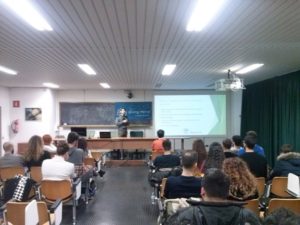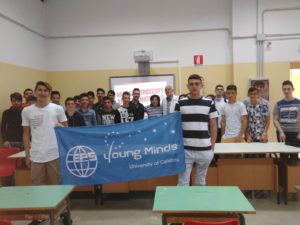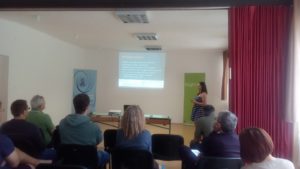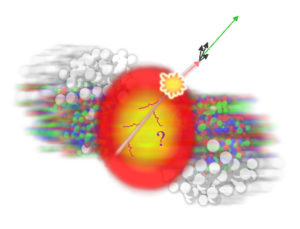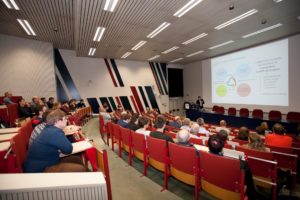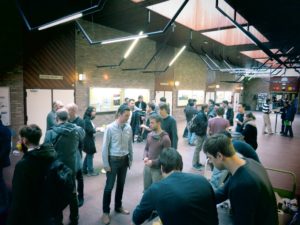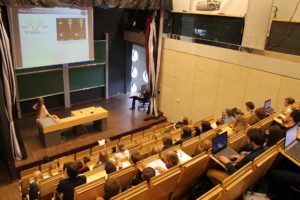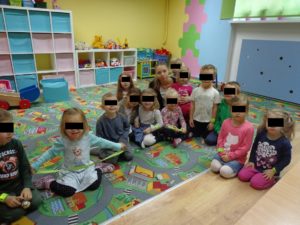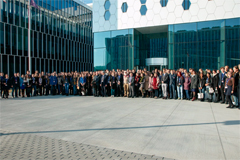 During Wednesday’s lunchtime on April 26, the Line of Light auditorium was crowded with 80 bachelor, master and PhD students interested to hear about optics and photonics technologies in the “Lunch with Industry” event. After grabbing a sandwich with soda, they focused their attention firstly to Peter Skovgaard, CEO and Co-founder from Norlase, and later to Sidsel Petersen, representing NKT Photonics company. Peter made a short overview of how their novel high-power visible laser technology allowed them to become a promising start-up company with a vision to outperform currently leading solutions available on the market. Sidsel, on the other hand, shared the vision and perspective of NKT Photonics – one of the leaders in the market of high performance fiber and laser technologies. She was generous enough to bring some of the examples of industrial photonic crystal fiber products, components, and materials used in fabrication.
During Wednesday’s lunchtime on April 26, the Line of Light auditorium was crowded with 80 bachelor, master and PhD students interested to hear about optics and photonics technologies in the “Lunch with Industry” event. After grabbing a sandwich with soda, they focused their attention firstly to Peter Skovgaard, CEO and Co-founder from Norlase, and later to Sidsel Petersen, representing NKT Photonics company. Peter made a short overview of how their novel high-power visible laser technology allowed them to become a promising start-up company with a vision to outperform currently leading solutions available on the market. Sidsel, on the other hand, shared the vision and perspective of NKT Photonics – one of the leaders in the market of high performance fiber and laser technologies. She was generous enough to bring some of the examples of industrial photonic crystal fiber products, components, and materials used in fabrication.
…Thanks to Norlase and NKT Photonics for shedding some light on current status of the laser industry!
A week later, on Friday 5, serial entrepreneur David Hardwick gave the talk “Science for profit and fun in the laser industry” accompanied by Prof. Jes Broeng. The duo addressed entrepreneurship, and shed light on some of the best ways to start a business in an effort to inspire students with innovation dreams.
David Hardwick is co-founder and Chairman of Norlase and Fauna Photonics in Denmark and an investor and advisor at BiFrost Communications. David is a past member of the Optical Society of America (OSA) Board and the OSA Foundation. He is a consultant to IMRA America and other companies in the industry.
During this event, everybody got a chance to pick the two entrepreneurs’ brains at the following discussion and plenty of opportunity to mingle. What a great afternoon!

